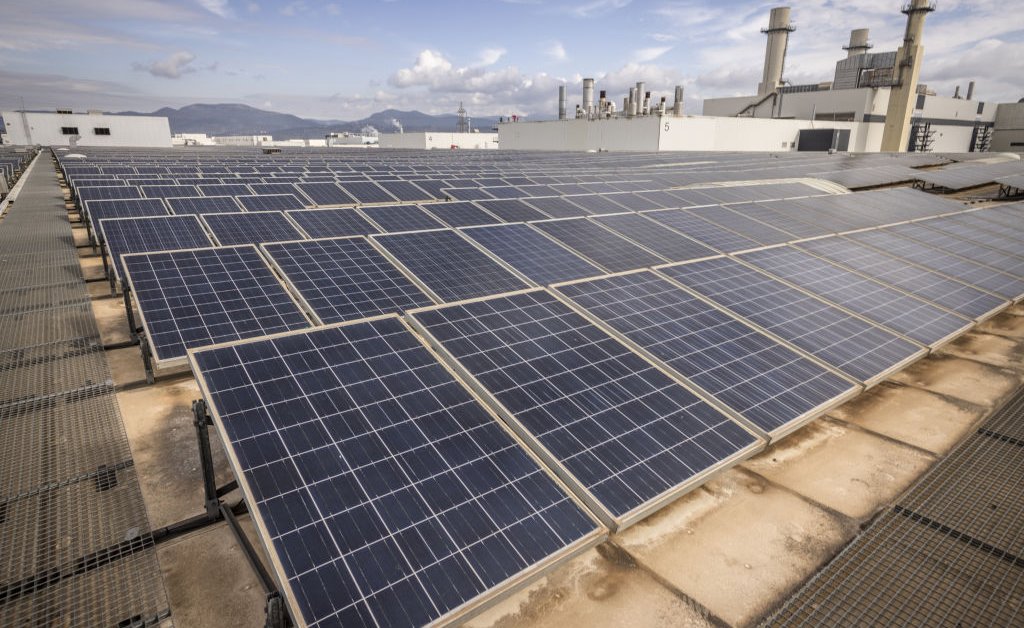Electricity Demand Soars: Beyond AI's Needs – A Deep Dive into the Energy Crisis
Editor’s Note: Concerns about surging electricity demand are escalating globally, exceeding even the energy-intensive demands of the rapidly expanding AI sector. This article explores the multifaceted causes and potential solutions.
Why This Matters: The global energy crisis is intensifying, driven by factors far beyond the increased energy consumption of artificial intelligence. Understanding the complex interplay of economic growth, climate change mitigation efforts, and technological advancements is crucial for navigating this challenge and securing a sustainable energy future. This article will delve into the key drivers of this surge, examining its impact on various sectors and exploring potential solutions.
Key Takeaways:
| Point | Explanation |
|---|---|
| Increased Industrial Activity: | Post-pandemic recovery fuels manufacturing & production, boosting energy needs. |
| Climate Change Mitigation: | Transition to renewable energy sources creates fluctuating demand patterns. |
| Growing Population & Urbanization: | Expanding cities and populations increase overall energy consumption. |
| Technological Advancements (Beyond AI): | Data centers, crypto mining, and other tech sectors contribute significantly. |
| Solutions: | Smart grids, energy storage, demand-side management, and renewable energy. |
1. Electricity Demand Soars: A Multifaceted Crisis
The global surge in electricity demand is a complex issue stemming from interconnected factors. While the energy needs of artificial intelligence are significant and growing, they represent only a part of the overall picture. The post-pandemic economic rebound has led to a significant increase in industrial activity, boosting energy consumption across various sectors. This increased demand strains existing energy infrastructure and highlights the urgent need for sustainable solutions.
Key Aspects:
- Industrial Resurgence: Manufacturing and production have seen a dramatic upswing, placing immense pressure on power grids.
- Climate Change Impacts: Extreme weather events, fueled by climate change, disrupt energy production and distribution, increasing reliance on backup power sources.
- Demographic Shifts: Rapid urbanization and population growth in developing nations exacerbate the energy demand challenge.
Detailed Analysis: The current energy crisis isn't solely about powering AI data centers. While the computational demands of AI are substantial, the energy consumption of traditional industries like manufacturing, transportation, and construction remain dominant energy consumers. The transition to renewable energy sources, while essential for environmental sustainability, also presents challenges. Intermittency in solar and wind power necessitates robust energy storage solutions and smart grid management to maintain a stable supply.
2. Interactive Elements on Electricity Demand
The surge in electricity demand is not a static phenomenon. It's a dynamic system influenced by various interacting factors.
Facets:
- Price Volatility: Fluctuations in energy prices impact consumer behavior and industrial production, creating instability in the energy market.
- Grid Stability: Integrating renewable energy sources requires advanced grid management to maintain a consistent supply and prevent outages.
- Geopolitical Factors: International relations and energy policies influence the availability and pricing of energy resources.
Summary: These facets highlight the complex and interconnected nature of the electricity demand challenge. Addressing it requires a holistic approach considering economic, environmental, and geopolitical factors.
3. Advanced Insights on Electricity Demand
Understanding the future trajectory of electricity demand requires examining emerging trends and technological advancements.
Further Analysis: Experts predict a continued increase in global energy consumption, driven by population growth, economic development, and technological innovation. The rise of electric vehicles and the expanding adoption of heat pumps for heating and cooling will further increase electricity demand. Addressing this necessitates a multi-pronged approach that prioritizes energy efficiency, renewable energy integration, and smart grid technologies.
Closing: Predicting future electricity demand with precision is challenging. However, it's clear that proactive measures are needed to avoid future energy crises and ensure a sustainable energy future.
People Also Ask (NLP-Friendly Answers):
Q1: What is driving the surge in electricity demand? A: Multiple factors contribute, including post-pandemic economic recovery, the growth of data-intensive technologies (beyond AI), climate change mitigation efforts, and population growth.
Q2: Why is this surge in electricity demand important? A: It strains existing infrastructure, increases energy prices, and highlights the urgent need for sustainable energy solutions to prevent future crises.
Q3: How can I reduce my contribution to this electricity demand? A: Adopt energy-efficient appliances, reduce energy consumption, switch to renewable energy sources where possible, and support policies promoting sustainable energy.
Q4: What are the main challenges in meeting this increased demand? A: Balancing energy security with environmental sustainability, integrating renewable energy sources effectively, and upgrading aging energy infrastructure.
Q5: How can governments address this growing electricity demand? A: Invest in renewable energy infrastructure, implement smart grid technologies, encourage energy efficiency, and support research and development in sustainable energy solutions.
7. Practical Tips for Managing Electricity Consumption:
Introduction: Reducing your energy footprint is crucial in addressing the global electricity demand surge. Here are some practical steps you can take:
Tips:
- Switch to LED lighting.
- Unplug electronics when not in use.
- Improve home insulation.
- Use energy-efficient appliances.
- Optimize your thermostat settings.
- Consider solar panels.
- Support sustainable energy policies.
- Monitor your energy usage regularly.
Summary: Even small changes in your energy consumption habits can contribute to reducing the overall strain on the electricity grid.
Transition: By understanding the complexities of the electricity demand surge and taking proactive steps, we can collectively work towards a more sustainable energy future.
8. Summary: The global surge in electricity demand presents a significant challenge. While AI's energy needs are a factor, the primary drivers are broader economic and demographic trends alongside the crucial shift towards renewable energy. Addressing this requires a multifaceted approach including investment in renewable energy, smart grids, energy efficiency measures, and supportive government policies.
9. Call to Action: Ready to make a difference? Learn more about sustainable energy solutions and discover how you can contribute to a greener future!

